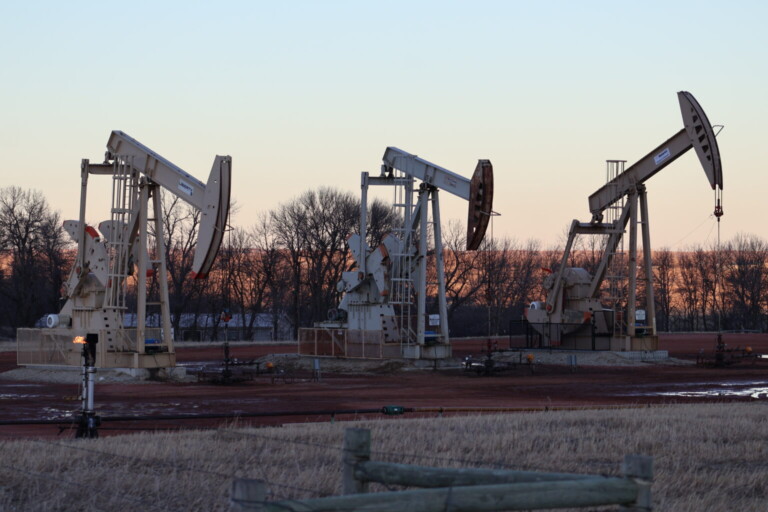North Dakota sees uptick in oil wells that qualify for tax exemption

BISMARCK, N.D. (North Dakota Monitor) — Nearly half of North Dakota oil wells now qualify for a tax exemption as low-producing wells, contributing to a reduction in tax revenue projections for the upcoming budget cycle.
But even if technology advancements lead to higher oil production, those wells would continue to qualify for the tax exemption under current state policy.
Lawmakers on Thursday discussed the state revenue forecast, which is largely driven by oil tax revenue.
Oil producers pay a 5% oil extraction tax and a 5% gross production tax. Low-producing wells, referred to as “stripper wells,” aren’t subject to the 5% oil extraction tax. A well in the Bakken or Three Forks formations can qualify as a stripper well after 12 consecutive months of producing no more than 35 barrels per day.
The tax department has seen a significant increase in the number of wells qualifying for that tax exemption, Joe Morrissette, director of the Office of Management and Budget, told a joint session of the House and Senate appropriations committees. An estimated 48% of wells are no longer required to pay the 5% oil extraction tax, Morrissette said.
That means the state is collecting the equivalent of a 4.3% oil extraction tax, Morrissette said.
Projections for the 2025-27 budget cycle reduce that to 4%.
Sen. Brad Bekkedahl, chair of the Senate Appropriations Committee, pointed out the growth in exemptions means a 20% drop in oil tax revenue for the state. He added that lawmakers had been expecting a reduction in oil tax collections. Bakken and Three Forks wells produce the most oil when they are newly completed and the oil production declines over time.
“It just seems like it’s happening faster than most of us expected, and probably to a higher degree than we expected,” said Bekkedahl, R-Williston.
The drop in oil production is why the industry is pushing to use enhanced oil recovery to squeeze more oil out of existing wells. The state has supported tax incentives and research dollars for using carbon dioxide in enhanced oil recovery.
Some lawmakers questioned whether wells classified as stripper wells would be subject to the oil extraction tax if their production increases. Morrissette said once a well qualifies for the exemption, it continues to qualify even if there is enhanced oil recovery.
“What are we getting for our investment, if it’s always going to stay with no extraction?” asked Sen. Ron Sorvaag, R-Fargo.
Rep. Jon Nelson, R-Rugby, said the state should consider policies to prevent wells from getting to the stripper well designation.
“That’s a pretty good deal, but not a very good policy from a statewide standpoint in my opinion,” Nelson said.
A study released in January projected that enhanced oil recovery could bring an additional $2.9 billion to $9 billion in revenue for North Dakota, primarily in oil taxes.
The state has about 10,500 active wells considered to be stripper wells, with about 8,500 of those in the Bakken and Three Forks formations, according to the Department of Mineral Resources.
The tax exemption is meant to encourage the continued operation of wells that might otherwise be unprofitable, said Department of Mineral Resources Director Nathan Anderson.
The stripper well tax exemption does not apply to the 5% gross production tax, which is imposed in lieu of property taxes.
This legislative session, lawmakers are considering House Bill 1483, which would expand a tax break to new wells drilled outside of the Bakken and Three Forks formations. The bill passed the House and a Senate committee this week discussed an amendment that would increase the impact of the tax break.
(Story written by Amy Dalrymple – North Dakota Monitor)






